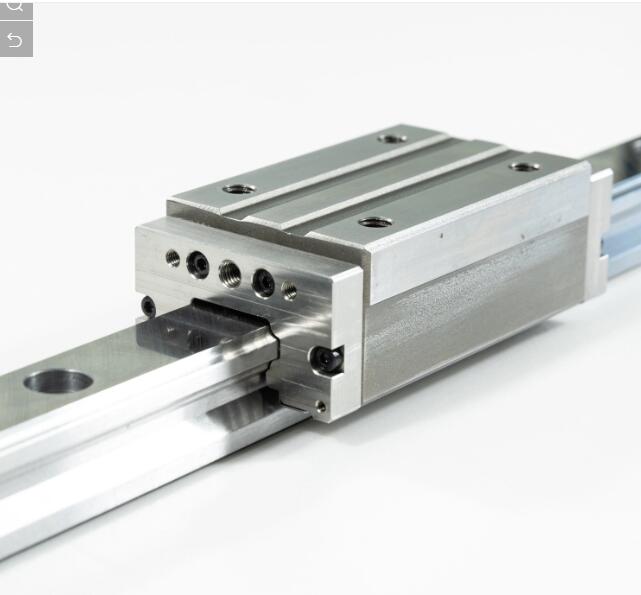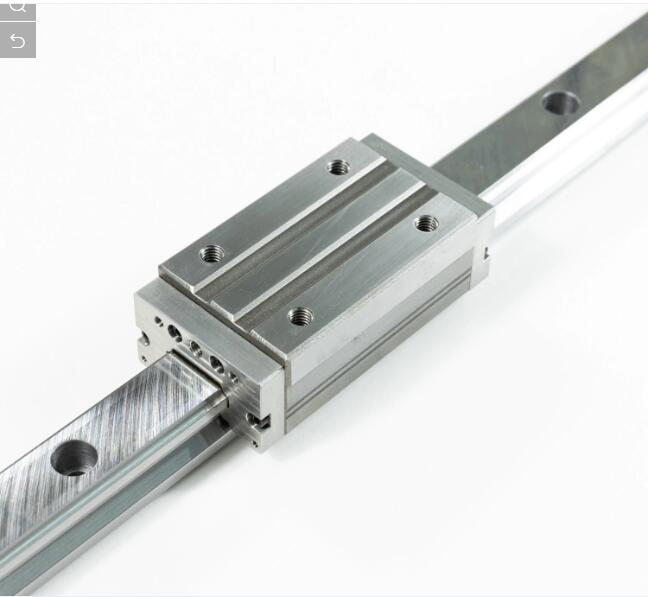In this article, we'll explore the different materials used in linear guides, compare their properties, and help you decide which material is best for your specific needs. PINSI is committed to providing insights to help you make informed decisions about your motion solutions.
1. Stainless steel material: durability and corrosion resistance


Excellent corrosion resistance and oxidation resistance. Therefore, stainless steel rails are suitable for challenging environments, such as those exposed to moisture, chemicals or extreme temperatures. In addition, industries such as food processing, pharmaceuticals and marine applications benefit from the anti-oxidation characteristics of stainless steel rails, even under harsh conditions.
However, its cost is relatively higher than that of bearing steel guide rails, and its hardness is not as good as that of bearing steel, so it is not suitable for high-load working environments. The guide rail made of stainless steel will be specially marked in the model expression, which can be easily identified during the purchase process.
PINSI can provide customized stainless steel rails, please contact us anytime.
2. Bearing steel material: robustness and load capacity
Bearing steel linear guides are known for their robustness and high load-carrying capacity. They excel in applications involving heavy loads or extreme forces. The material's rigidity and damping properties make it suitable for machinery that requires stability and precision, such as woodworking equipment, heavy conveyors and industrial automation systems, various CNC machine tools, and more.
Most of the guide rail standard products on the market are made of bearing steel. And the price is more moderate than stainless steel.
PINSI guide rail has a complete range of models to meet your different needs. We will provide you with a complete product catalog to facilitate you to choose the right model.
3. Alloy steel material: customized performance

Hybrid materials combine the advantages of different materials to create solutions that meet specific requirements. Alloy steel guide rails can achieve specific needs such as wear resistance, corrosion resistance, rapid adaptation to extreme temperature environments, rail magnetism, etc. by controlling the proportion of mixed materials. These guides provide a customized balance of properties, such as combining aluminum for lightweight construction, and combining Stainless steel for corrosion resistance. Industries such as automotive manufacturing and precision optics benefit from these custom solutions.
Of course, customization needs not only require the manufacturer's production technology to be mature, but the research and development process also leads to higher costs and longer delivery times than standard products.
PINSI has accumulated many years of experience in customer customization services. Through various technical solutions such as anti-rust blackening and electroplating, it can effectively save you at least 20% of customization costs while meeting your needs.
Generally speaking, stainless steel guide rails, bearing steel guide rails and alloy steel guide rails are the most common materials for linear guide rails in the market. When selecting the material of the linear guide rail, multiple factors such as the application environment of the guide rail, workload, speed and accuracy need to be considered. Only by comprehensive consideration can we choose the best material suitable for our own equipment and achieve the best effect.


 +8615622924499
+8615622924499
 +8615622924499
+8615622924499

